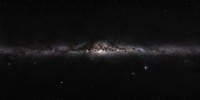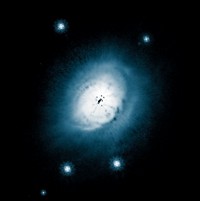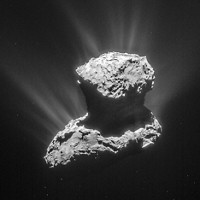Advertisement
Grab your lab coat. Let's get started
Welcome!
Welcome!
Create an account below to get 6 C&EN articles per month, receive newsletters and more - all free.
It seems this is your first time logging in online. Please enter the following information to continue.
As an ACS member you automatically get access to this site. All we need is few more details to create your reading experience.
Not you? Sign in with a different account.
Not you? Sign in with a different account.
ERROR 1
ERROR 1
ERROR 2
ERROR 2
ERROR 2
ERROR 2
ERROR 2
Password and Confirm password must match.
If you have an ACS member number, please enter it here so we can link this account to your membership. (optional)
ERROR 2
ACS values your privacy. By submitting your information, you are gaining access to C&EN and subscribing to our weekly newsletter. We use the information you provide to make your reading experience better, and we will never sell your data to third party members.
Physical Chemistry
Probing Titan's Smog
Cassini spectrometers reveal reactions behind haze
by Jyllian Kemsley
May 14, 2007
| A version of this story appeared in
Volume 85, Issue 20

WITHIN THE ORANGE HAZE shrouding Saturn's moon Titan lies a complex chemical environment, originating with N2 and methane and powered by solar ultraviolet radiation and charged particles from Saturn's magnetosphere. Spectroscopic data from NASA's Cassini spacecraft have now allowed scientists to penetrate the chemistry behind the smog, yielding surprising results.
To begin with, chemical reactions are occurring much higher in Titan's atmosphere than previously believed, at an altitude around 1,000 km. There, CH4 and N2 react to form simple organic molecules such as acetylene, ethylene, and HCN. Then, reactions between ions and neutral molecules link those components into larger molecules, including benzene (Science 2007, 316, 870).
The study's lead investigator, J. Hunter Waite Jr. of Southwest Research Institute, notes that researchers previously believed that reactions would occur predominantly by radical processes lower in the atmosphere. Now, it appears that ion-neutral reactions occur in the upper atmosphere to produce polycyclic aromatic hydrocarbons (PAHs) as well as heterocyclic compounds involving nitrogen.
Waite's team used data from Cassini's mass and plasma spectrometers to identify a range of compounds in Titan's upper atmosphere. They used data from the ion-neutral mass spectrometer to identify and quantify amounts of N2, methane, cyanogen, benzene, and other organic molecules up to 100 daltons. They used the plasma spectrometer to identify larger molecules such as naphthalene, anthracene derivatives, and an anthracene dimer. This same instrument also revealed the presence of extremely heavy negative ions, with masses up to 8,000 Da, probably produced by aggregation of PAHs.
"These very large organic molecules in the upper atmosphere indicate there's a complex ion-neutral chemistry going on that really hasn't been considered much before," says Caitlin Griffith, an associate professor of planetary atmospheres at the University of Arizona.
Those massive negative ions—no longer in the gas phase, as compounds heavier than about 2,000 Da become aerosols in Titan's atmosphere—then likely lose altitude, becoming condensation nuclei for supersaturated benzene and other components of Titan's atmosphere. As the particles grow and react, eventually they might become tholins, large hydrocarbon-nitrile particles thought to produce Titan's orange haze.
"To conclude that the ions seen by [the plasma spectrometer] are massive organic molecule precursors to haze or haze itself is speculative," writes Sushil K. Atreya, professor of atmospheric and space science at the University of Michigan, Ann Arbor, in a Science commentary. But considering the evidence at hand, Atreya adds, "this speculation may be close to reality." More answers may have to await the next mission to Titan, which is in the planning stages but probably will include spectrometers with greater mass resolution and range.





Join the conversation
Contact the reporter
Submit a Letter to the Editor for publication
Engage with us on Twitter